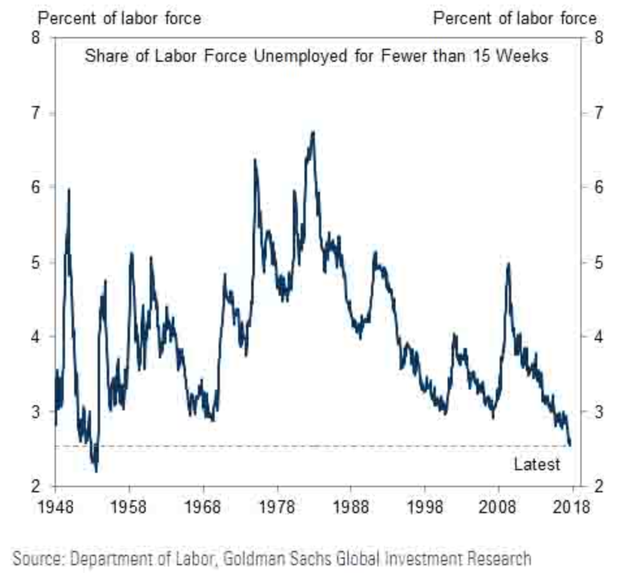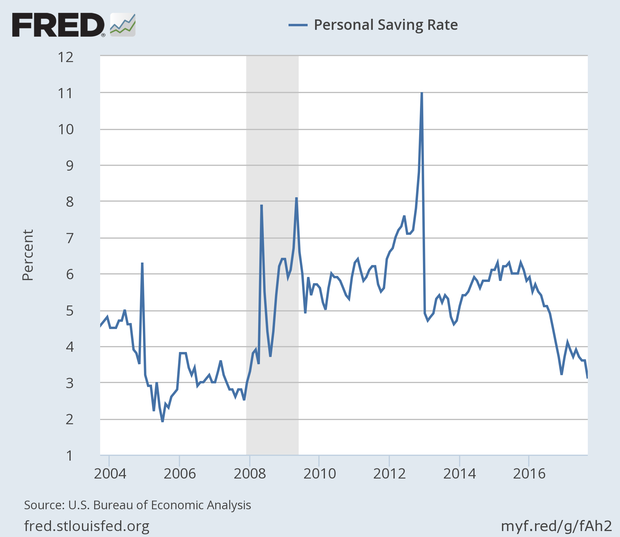Could things get any better with the stock market and the economy? They had better improve in at least one important area, argues an economist who finds a troubling trend in the crush of good economic news lately.
The Dow Jones Industrial Average just wrapped up a nearly five percent gain in October, crushing the month’s frequently spooky reputation thanks to steep gains in key tech stocks like Microsoft (MSFT) and IBM (IBM). Home prices have eclipsed the housing bubble highs of 2007, with the average U.S. home selling after just three weeks on the market for the fastest pace in at least 30 years. The unemployment rate has fallen to levels last seen during the dotcom boom, while Goldman Sachs notes that short-term unemployment measures have hit lows associated in the past with wartime mobilization.

Consumer confidence surged in October to its highest level in nearly 17 years. Folks are upbeat about the short-term outlook and the health of the job market. This follows the release Monday of a big 1 percent increase month-over-month in consumer spending in September, the best such increase since August 2009. All this sets the stage for a solid holiday shopping season.
Also supporting this thesis is the fact that U.S. savings rate has fallen to just 3.1 percent, the lowest of this cycle thus far. While wage inflation remains relatively tepid, consumers are feeling encouraged to spend on hopes of looming tax cuts (with legislation still working through Congress) and higher household net worth, which as a share of disposable income (670 percent) has exceeded the highs of the last two bull markets.
All of this, of course, is predicated on financial asset valuations remaining lofty and stock prices continuing to grind “up and to the right” on the charts. That assumption has Gluskin Sheff economist David Rosenberg a little perturbed.
He notes that the consumer spending surge was driven, in part, by the stimulation effects of insurance checks covering hurricane damage — flooded-out cars and all that. Interesting point: That August 2009 data point we’ve returned to in terms of spending growth? That was the effect of the Obama-era “cash-for-clunkers” program.
Rosenberg focuses instead on the fact that income growth remains troublingly weak. And that, not “debt-financed spending,” is what is the “true measure of economic well-being and the standard of living,” he argues. Unfortunately, real disposable income (earnings net of taxes and inflation) dropped in September and has fallen in three of the last four months, while real consumer spending has increased at a 2.8 percent annual rate of this period.

This trend — spending outpacing income — has been in effect since November 2015.
Rosenberg warns that the last two times the savings rate plumbed these depths was in December 2000 and December 2007. Both capped strong holiday shopping seasons, with gifts and joy abounding. But they both marked the twilight before recessions hit.
© 2017 CBS Interactive Inc.. All Rights Reserved.

